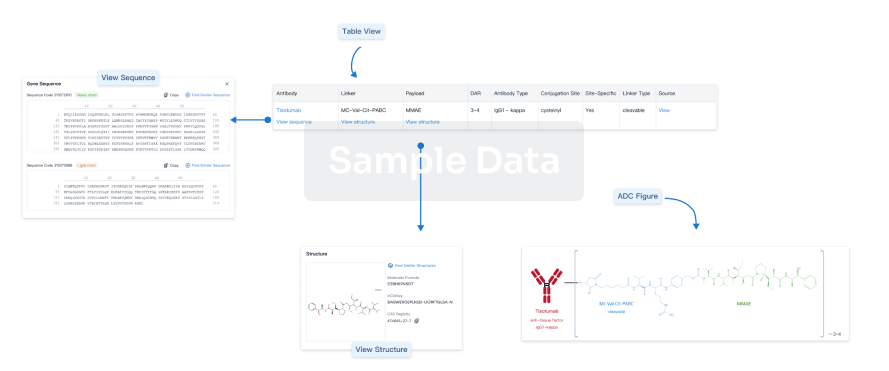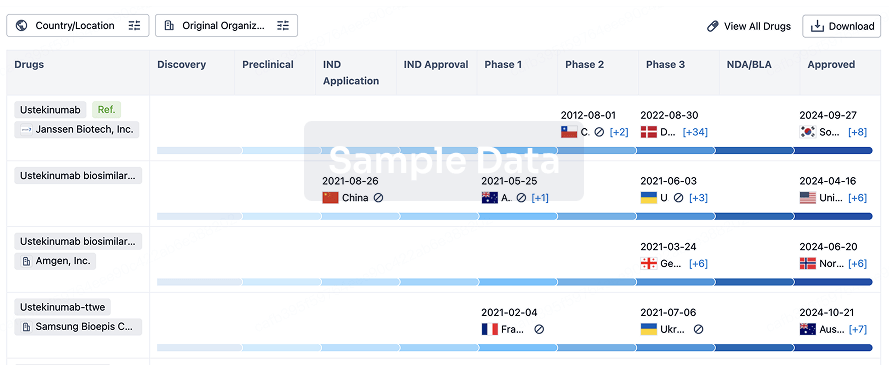MUNICH--(BUSINESS WIRE)--Tubulis today announced the successful closing of a €308 million (USD 361 million) financing. The round was led by Venrock Healthcare Capital Partners with participation from additional new investors Wellington Management and Ascenta Capital. Existing investors who supported the Series C include Nextech Invest, EQT Life Sciences, Frazier Life Sciences, Andera Partners, Deep Track Capital, Bayern Kapital, Fund+, High-Tech Gründerfonds (HTGF), OCCIDENT, and Seventure Partners.
The proceeds from the Series C financing will be used to expand the clinical development of TUB-040, Tubulis’ lead antibody-drug conjugate (ADC) candidate, into earlier lines of therapy and additional tumor indications. TUB-040 targets NaPi2b, an antigen that is overexpressed in ovarian cancer and lung adenocarcinomas. TUB-040 is currently being evaluated in a Phase I/IIa study (NAPISTAR1-01, NCT06303505) in patients with platinum-resistant ovarian cancer (PROC) as well as relapsed or refractory non-small cell lung cancer and was granted Fast Track designation by the U.S. FDA in June 2024. The capital will also advance Tubulis’ pipeline, including the clinical-stage ADC candidate TUB-030, several preclinical programs, and expand its proprietary ADC platform technologies to bring ADCs into novel applications.
“This landmark financing round reflects the deep conviction these global healthcare investors have in Tubulis and the disruptive potential of our ADC platforms,” said Dr. Dominik Schumacher, CEO and Co-founder of Tubulis. “With TUB-040 progressing in the clinic and first data to be shared in a late-breaking oral presentation at ESMO, we are ready to expand into earlier treatment lines, while continuing to innovate across our pipeline and technology platforms. The new funding empowers us to execute on our vision of creating truly differentiated antibody-drug conjugates that are tailored to the biology of solid tumors and can deliver superior therapeutic value to patients.”
“Tubulis has distinguished itself in the ADC field with a forward-looking vision consistently backed by strong scientific data,” said Nimish Shah, Partner at Venrock Healthcare Capital Partners. “The company is now positioned to translate an exceptional preclinical foundation into meaningful clinical results, with several important readouts on the horizon. As Tubulis continues to expand its pipeline and build momentum, I’m excited to partner with the leadership team and Board to advance a new generation of ADC medicines for patients.”
In conjunction with the financing, Dr. Lorence Kim, Co-founder and Managing Partner at Ascenta Capital and Patrick Heron, Managing Partner at Frazier Life Sciences, will join Tubulis’ Supervisory Board. An overview of all Supervisory Board members and their biographies can be found here.
“This milestone financing is a testament to the scientific strength and executional track-record of the Tubulis team,” added Dr. Christian Grøndahl, Chair of the Supervisory Board of Tubulis. “The company has built a unique ADC platform and is now working on demonstrating its clinical impact. With the backing of experienced biotech investors, Tubulis is on a path towards solidifying its position as a global leader in the ADC landscape.”
About Tubulis
Tubulis generates uniquely matched antibody-drug conjugates with superior biophysical properties that have demonstrated durable on-tumor delivery and long-lasting anti-tumor activity in preclinical models. The two lead programs in our growing pipeline, TUB-040, targeting NaPi2b, and TUB-030, directed against 5T4, are being evaluated in the clinic in high-need solid tumor indications. We will solidify our leadership position by continuing to innovate on all aspects of ADC design leveraging our proprietary platform technologies. Our goal is to expand the therapeutic potential of this drug class for our pipeline, our partners and for patients. Visit www.tubulis.com or follow us on LinkedIn.
About Venrock Healthcare Capital Partners.
Venrock Healthcare Capital Partners (VHCP) is a healthcare-focused, late-stage venture capital fund family that invests primarily in publicly-held and late-stage private companies within the healthcare and life sciences industries, with a strong emphasis on small-cap public companies and biotechnology. VHCP focuses on companies developing and commercializing innovative products and technologies. For more information, please visit www.venrock.com.
About Ascenta Capital
Ascenta Capital is a biotech venture fund, co-founded in 2023 by Dr. Evan Rachlin and Dr. Lorence Kim. The fund is focused on a concentrated portfolio of investments in multi-product companies. For more information about Ascenta Capital, visit www.ascentacap.com.
About Wellington Management
Wellington Management is one of the world’s largest independent investment management firms, serving as a trusted adviser to over 2,500 clients in more than 60 countries. The firm manages more than US$1.3 trillion, as of 30 September 2025, for pensions, endowments and foundations, insurers, family offices, fund sponsors, global wealth managers, and other clients. Wellington aspires to provide excellent service to clients through a unique combination of independence enabled by its distinctive private partnership model, diverse perspectives through its unified, multi-asset investment platform, and relentless curiosity and intellectual rigor fostered by its enduring collaborative culture.









